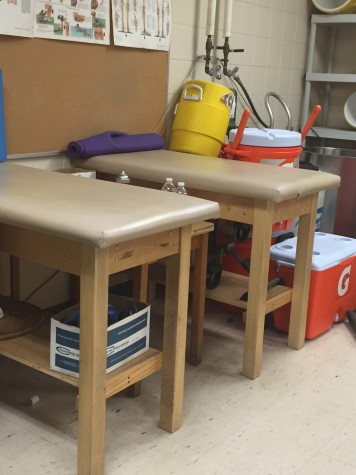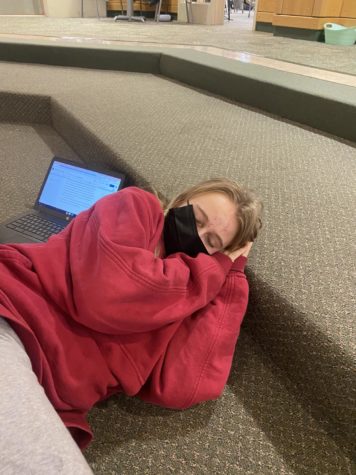Sports Taking Their Toll On Students
May 5, 2016

Rough competition can push our athletes to breaking points, whether it’s a contact sport or a noncontact sport, because students will do their best so that they’ll be the best. Sometimes, we fail to accomplish that success, and often times, we can’t blame the sport. Athletes fail to warm up correctly and take care of themselves after an injury while off the fields. Without healing properly, the athlete is letting his or her injury hurt for a longer period of time.
The seven most common injuries, according to webmd.com are, “ankle sprains, groin pulls, hamstring strains, shin splints, knee injuries (ACL tear), knee injuries (patellofemoral syndrome), and tennis elbows. Ankle sprains occurs when the foot turns inward, stretching and sometimes tearing the ligaments on the outside of the ankle. Groin pulls happen during a motion of “pushing side to side (causing) strain of the inner thigh muscles or groin. Hockey, soccer, football, and baseball are common sports with groin injuries,” says Royster. Hamstring Strains usually happens when the three hamstring muscles are overstretched by doing activities like kicking the leg sharply while running. This can happen during an event of hurdles and while playing soccer.
Next are shin splints which are pains down the front of the athlete’s shins. They’re usually brought on by change of ground like rubber to track or road, but they can also be brought on by suddenly starting a very strenuous exercises without the proper preparation beforehand. Kelley says that ACL can cause the most damage long term, “really anything that requires surgical intervention because the body part just isn’t the same ever again.” She relates the muscles to a rubber band; if you break one you can never really put it back together because tying a knot isn’t the same as an unbroken fully functional rubber band. What happens during the injury is the Anterior, Cruciate Ligament (ACL) rips or tears. This injury mainly occurs when the athlete gets hit from the side.
Another dangerous knee injury on webmd.com list is Patellofemoral Syndrome which “can result from repetitive movement of your kneecap (patella) against your thigh bone (femur), which can damage the tissue under the knee cap. Running, volleyball, and basketball commonly set it off.”
Finally there’s tennis Elbow or Epicondylitis which webmd.com describes as the, “repetitive use of the elbow like during a golf or tennis swings, irritates and makes tears in the elbow’s tendons.”
Webmd.com’s Dr. Putukian says the best way to warm up is to “lightly work the relevant muscle groups.” She stresses that warming up is important because it “increases blood flow to the muscles, gets you more flexible, and could decrease injuries.”
The danger of getting hurt and not treating it or healing it is that scar tissue will build up, causing more damage which will hurt you later in life. As ,the Ipswich Trainer, says, “Any injury can cause scar tissue to build up which is the body’s way of trying to protect the area from more trauma, but it just creates more stiffness and pain. Repetitive injuries can cause arthritis, bone growth in muscles and overall weakness in the area. But you could also see this in someone who was never injured before due to the type of sport that they play.






